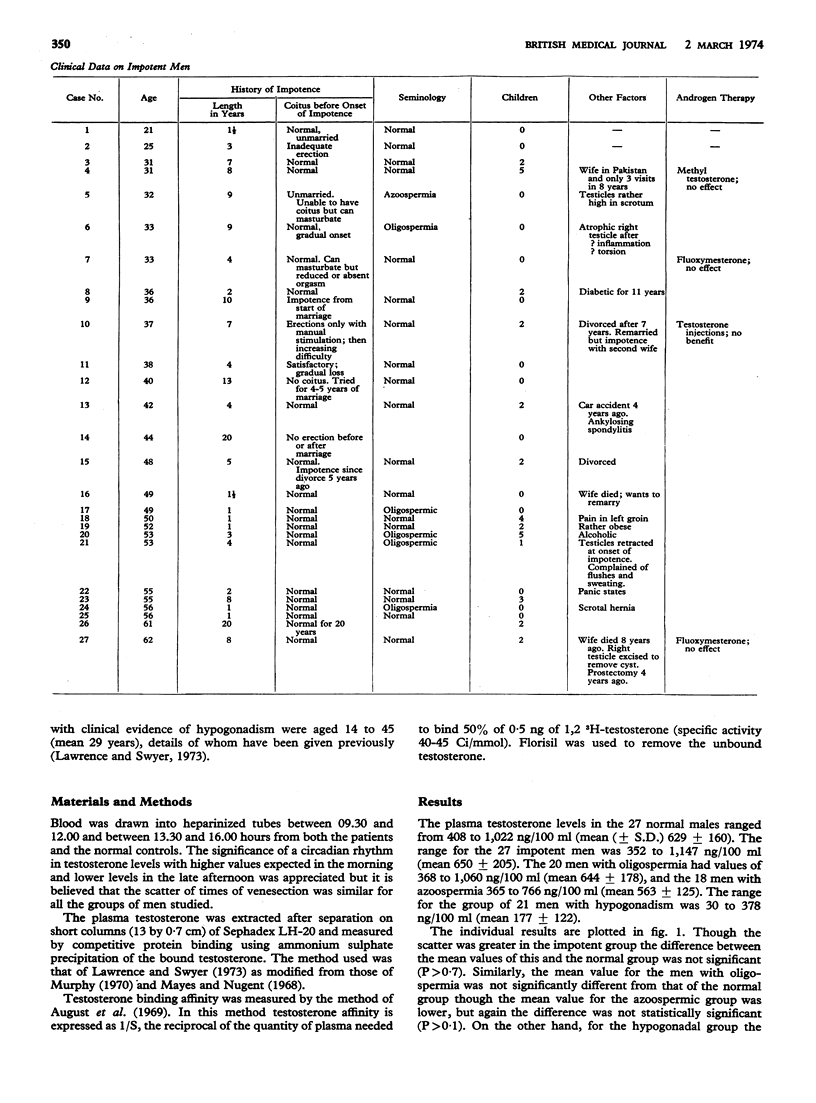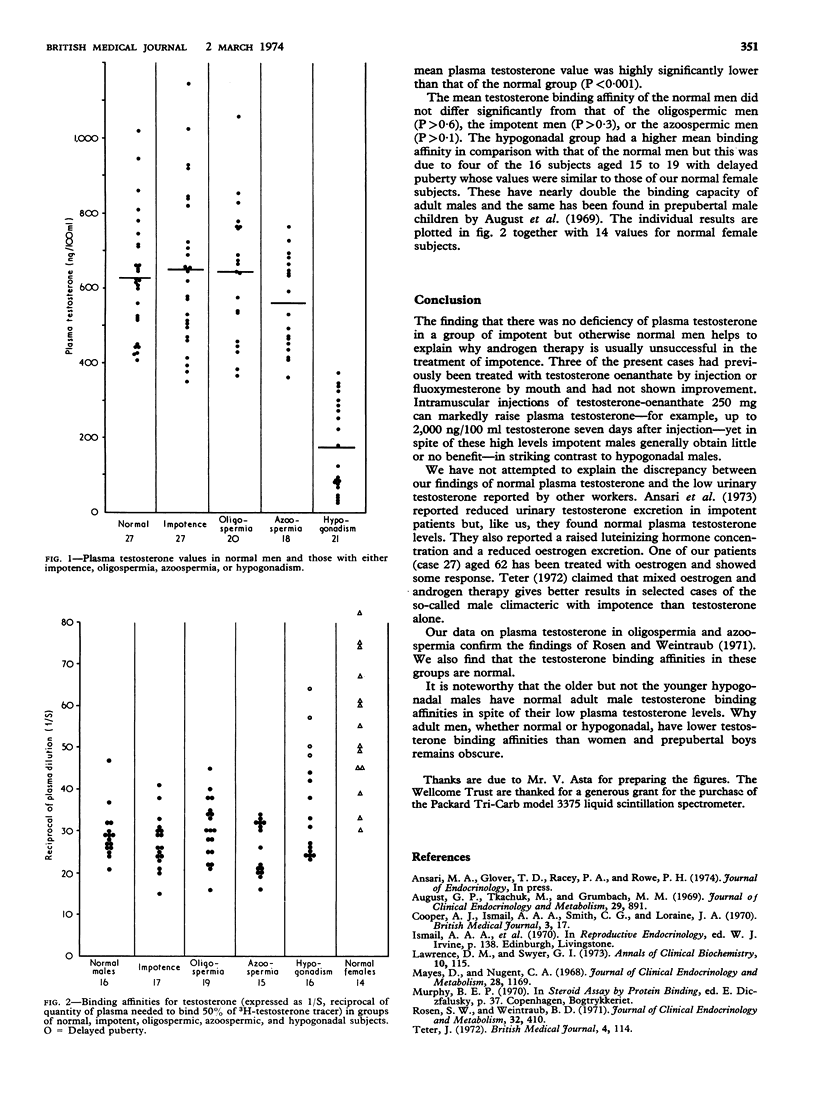Abstract
Mean plasma testosterone levels (± S.D.), using Sephadex LH-20 and competitive protein binding, were 629 ± 160 ng/100 ml for a group of 27 normal adult men, 650 ± 205 ng/100 ml for 27 impotent men with normal secondary sex characteristics, 644 ± 178 ng/100 ml for 20 men with oligospermia, and 563 ± 125 ng/100 ml for 16 azoospermic men. None of these values differ significantly. For 21 men with clinical evidence of hypogonadism the mean plasma testosterone (± S.D.), at 177 ± 122 ng/100 ml, differed significantly (P < 0·001) from that of the normal men.
The mean testosterone binding affinities (as measured by the reciprocal of the quantity of plasma needed to bind 50% of 3H-testosterone tracer) were similar for normal, impotent, and oligospermic men. Though lower for azoospermic men the difference was not significant (P >0·1). For 12 of the 16 hypogonadal males the testosterone binding affinity was normal, but raised binding affinities, similar to those found in normal adult females or prepubertal boys (about twice normal adult male levels), were found in four cases of delayed puberty. These findings help to explain why androgen therapy is usually useless in the treatment of impotence.
Full text
PDF


Selected References
These references are in PubMed. This may not be the complete list of references from this article.
- August G. P., Tkachuk M., Grumbach M. M. Plasma testosterone-binding affinity and testosterone in umbilical cord plasma, late pregnancy, prepubertal children, and adults. J Clin Endocrinol Metab. 1969 Jul;29(7):891–899. doi: 10.1210/jcem-29-7-891. [DOI] [PubMed] [Google Scholar]
- Cooper A. J., Ismail A. A., Smith C. G., Loraine J. A. Androgen function in "psychogenic" and "constitutional" types of impotence. Br Med J. 1970 Jul 4;3(5713):17–20. doi: 10.1136/bmj.3.5713.17. [DOI] [PMC free article] [PubMed] [Google Scholar]
- Mayes D., Nugent C. A. Determination of plasma testosterone by the use of competitive protein binding. J Clin Endocrinol Metab. 1968 Aug;28(8):1169–1176. doi: 10.1210/jcem-28-8-1169. [DOI] [PubMed] [Google Scholar]
- Rosen S. W., Weintraub B. D. Monotropic increase of serum FSH correlated with low sperm count in young men with idiopathic oligospermia and aspermia. J Clin Endocrinol Metab. 1971 Mar;32(3):410–416. doi: 10.1210/jcem-32-3-410. [DOI] [PubMed] [Google Scholar]


